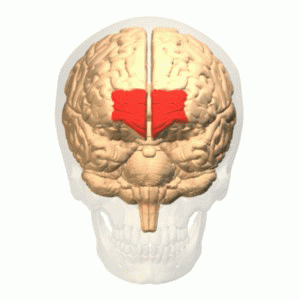
Reasons for judgement were released today by the BC Supreme Court, Vancouver Registry, assessing damages of just over $5.9 million for injuries and losses sustained in a Dance Floor injury.
In today’s case (Danicek v. Alexander Holburn Beaudin & Lang) the Plaintiff lawyer was out at a lawfirm function in 2001. After dinner some members of the Plaintiff’s firm went dancing at a nightclub in downtown Vancouver. During the evening a fellow lawyer fell backwards while dancing. During his fall he struck the Plaintiff causing her to fall as well. The Plaintiff hit her head on the ground with enough force to knock her unconscious. Liability was in issue however Mr. Justice Kelleher found the Defendant was impaired when he fell and that he was fully responsible for the incident.
The Plaintiff suffered a mild traumatic brain injury (MTBI) the consequences of which were expected to never fully recover. The court found that the Plaintiff would likely never work competitively as a lawyer again and awarded over $5 million for her diminished earning capacity. Mr. Justice Kellehar also awarded the Plaintiff $185,000 for her non-pecuniary damages (money for pain and suffering and loss of enjoyment of life). In reaching this figure the Court made the following findings about the severity and extent of the Plaintiff’s brain injury:
227] I find Ms. Danicek suffered a mild, traumatic brain injury in the April 6, 2001 accident. It has had a profound effect on her life. She was completely disabled from work until December 2001. As Dr. Anderson notes in his report dated January 26, 2007, the mild traumatic brain injury has resulted in ongoing post-concussive symptoms, which include physical, cognitive, and emotional difficulties.
[228] Her headache pain has persisted and persists today, some nine years after the accident. The post-traumatic headaches have resulted in the plaintiff developing chronic pain disorder. Dr. Anderson notes that chronic pain disorder “causes significant distress or impairment in social, occupational, or other important areas of functioning.” …
[229] The medical evidence suggests that the plaintiff is not likely to completely or even substantially recover from these symptoms….
230] Dr. Robinson noted that persons who suffer from severe headache disorders similar to the plaintiff’s condition are not likely to realize substantial improvements with the available treatments.
[231] Dr. Anderson does not consider it likely that the plaintiff’s chronic pain disorder will meaningfully improve…
[232] In addition to the headaches and pain disorder, I accept that the dance accident caused some measure of cognitive impairment. Ms. Danicek felt that before the accident she was quick to understand new concepts. Today, she feels that, in her words, everyone gets it except her….
254] The dance accident has impacted the plaintiff’s life profoundly. She has lost much. She has had and continues to have headaches of varying severity and duration. The injury has affected her physical and mental abilities and had a significant impact on her relationship with Mr. Schober.
[255] The plaintiff has experienced a loss of enjoyment of life, and is unable to engage in many recreational activities. Her lifestyle has drastically changed since the dance accident.
[256] An example of the effect of the dance accident on the plaintiff’s life is found in the evidence of her friend, Kristen Schneider. Prior to the accident, Ms. Schneider described the plaintiff as having “the most energy I think out of anybody I know”. At trial, Ms. Schneider testified that after the dance accident, Ms. Danicek was unable to consistently make their customary lunch dates; when she did, they had to find restaurants that were quiet to avoid exacerbating her headaches.
[257] Additionally, she and the plaintiff no longer regularly go for runs, rollerblade, or hike the Grouse Grind, as was their habit prior to the dance accident.
[258] Ms. Danicek is no longer able to pursue her career as a corporate solicitor working on “big deals”, a position she worked hard to obtain. The plaintiff enjoyed this work and her career was a source of pride for her. I accept this loss has negatively affected her feelings of self-worth and emotional well-being. In Reference Re Public Service Employee Relations Act (Alta.), [1987] 1 S.C.R. 313, Dickson C.J. (in dissent) stated at 368:
Work is one of the most fundamental aspects in a person’s life, providing the individual with a means of financial support and, as importantly, a contributory role in society. A person’s employment is an essential component of his or her sense of identity, self-worth and emotional well-being.
[259] It is clear the plaintiff continues to suffer from her injuries, and her problems are likely to continue in the future without substantial improvement or resolution. Her prognosis for recovery or diminishment of her chronic headaches and pain is not good.
[260] While individual judgments turn very much on their particular facts, two decisions which have influenced me are Reilly v. Lynn, 2000 BCSC 360, varied on other grounds, 2003 BCCA 49, leave to appeal ref’d [2003] S.C.C.A. No. 221, and Adamson v. Charity, 2007 BCSC 671.
[261] In the circumstances, an award of $185,000 is appropriate.
 (Image via Wikipedia via pointnshoot’s flickr stream)
(Image via Wikipedia via pointnshoot’s flickr stream) 






